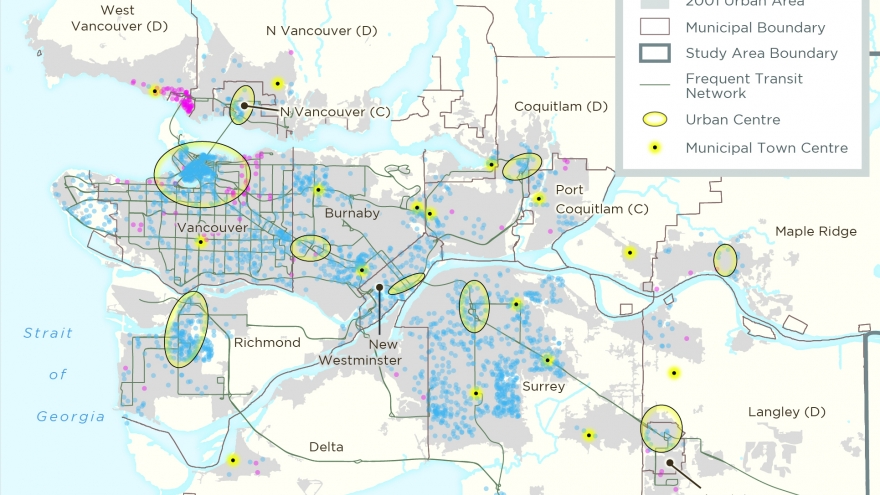This report compares the growth patterns of the Greater Toronto and Hamilton Area (GTHA) between 2001 and 2011 with that of Metro Vancouver. Both city-regions have growth management plans in place - the Growth Plan for the Greater Golden Horseshoe in Ontario and a regional growth strategy called Metro Vancouver 2040: Shaping Our Future in British Columbia. Although the Toronto region has reduced its rate of land consumption for urbanization since the 1990s, 86% of the net new population increase between 2001 and 2011 was housed in new subdivisions built on greenfield sites, while in Metro Vancouver, 70% of the net new population increase went to intensification areas.
In both cities, the number of net new dwellings outpaced population growth, most likely because of the Canada-wide trend towards smaller households. As intensification has not kept pace with growth in the GTHA, many established urban areas lost population between 2001 and 2011, whereas population loss was rare in Metro Vancouver. Metro Vancouver also offers a broader range of housing options than the GTHA, where new housing mainly takes the form either of single detached houses or of condominium apartments. The report concludes that Metro Vancouver's growth strategy is more effective than Ontario's Growth Plan in directing growth to areas that are already well served by transit and other infrastructure.





